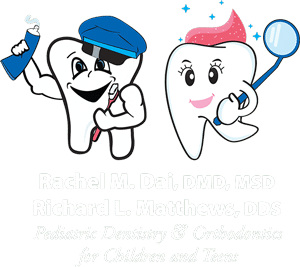Everything about Legacy Orthodontics
Table of ContentsThe Single Strategy To Use For Legacy OrthodonticsThe Of Legacy OrthodonticsLegacy Orthodontics Fundamentals ExplainedThe 6-Second Trick For Legacy OrthodonticsUnknown Facts About Legacy Orthodontics
In enhancement, we provide flexible treatment schedules, flexible repayment choices and an enjoyable, pleasurable experience.An orthodontist is a dentist trained to diagnose, avoid, and treat teeth and jaw irregularities. Orthodontists function with individuals of all ages, from children to adults.
Malocclusion, or misaligned teeth, can lead to oral concerns, including tooth decay, gum disease, and difficult or painful chewing. Yet not everyone is birthed with straight teeth. If you have a poor bite or large rooms in between your teeth, you may wish to speak with a dental professional concentrating on orthodontic treatment.
The Ultimate Guide To Legacy Orthodontics
( Picture Credit History: DigitalVision/Getty Images) Orthodontists utilize fixed and removable dental devices, like dental braces, retainers, and bands, to transform the position of teeth in your mouth. Orthodontic treatment is for oral abnormalities, consisting of: Misaligned teethBite troubles, like an overbite or an underbiteCrowded teeth or teeth that are also far apartJaw misalignmentThe goal of orthodontic therapy is to improve your bite.
While you may assume of orthodontists as primarily for children or young adults who need dental braces, they can remedy oral troubles at any age. Orthodontists attend university, oral college, and orthodontic institution.
, however not all dentists are orthodontists. They concentrate on 2 areas: Just how to properly and safely relocate teeth How to properly guide advancement in the teeth, jaw, and faceOnce an orthodontist has finished training, they have the option to come to be board certified.
The Legacy Orthodontics Statements
Imbalance, or malocclusion, is the most usual factor people see an orthodontist. It is hereditary and is the result of dimension distinctions between the upper and reduced jaw or between the jaw and teeth. Malocclusion causes tooth overcrowding, a misshapen jaw, or irregular bite patterns. Malocclusion is generally treated with: Your orthodontist attaches steel, ceramic, or plastic square bonds to your teeth.
If you have just minor malocclusion, you might have the ability to make use of clear dental braces, called aligners, as opposed to traditional braces (https://myspace.com/legacyortho). Some individuals need a headgear to assist relocate teeth into line with pressure from outside the mouth. After braces or aligners, you'll need to put on a retainer. A retainer is a custom gadget that maintains your teeth in location.
They're frequently utilized on youngsters. They can produce additional room in the mouth without having to draw teeth. If you have a serious underbite or overbite, you may need orthognathic surgery (likewise called orthodontic surgical treatment) to lengthen or shorten your jaw. Orthodontists make use visit the website of cords, medical screws, or plates to sustain your jaw bone.
You might require to see an orthodontist if you have: Crowding or otherwise sufficient space for every one of your teethOverbite, when your upper teeth come by your bottom teethUnderbite, when your base teeth are as well much forwardSpacing or issues with gapsCrossbite, which is when your top teeth fit behind your base teeth when your mouth is closedOpen bite or an upright space in between your front base and upper teethMisplaced midline, when the center of your base and top teeth do not align Fixing an oral malocclusion can: Make attacking, chewing, and speaking easierImprove the symmetry of our face and your total appearanceEase discomfort from temporomandibular joint conditionsDifferent your teeth and make them easier to clean, aiding protect against dental cavity or tooth cavities It's typically a dental practitioner that initially notices misaligned teeth throughout a regular exam.
More About Legacy Orthodontics

Throughout your first orthodontic appointment, you'll likely have: An oral examPhotos taken of your face and smileDental X-raysPanoramic (360 level) X-rays of your face and headImpressions to create molds of your teethThese examinations will certainly help your orthodontist understand how to wage your treatment. clear braces. An orthodontist is a dental practitioner who's had training to treat your teeth and jaw
Orthodontists may carry out surgery, exams,X-rays,and more to assist you achieve a more comfy, much healthier smile. An orthodontist is concentrated on your bite, so something like a damaged tooth would be managed by a dental expert. Orthodontists are dentists but not all dentists are orthodontists. Orthodontists are concentrated on your bite, or the means your teeth fit together, and the straightness of your teeth.
Ever questioned how stars constantly seem to have completely lined up teeth? The answer frequently exists in the experienced hands of an orthodontist. Yet exactly what does an orthodontist do? Orthodontists are oral professionals who concentrate on fixing abnormalities in the teeth and jaws. Their know-how exceeds simply developing a stunning smile; it encompasses boosting your general dental health and wellness and function.
The Single Strategy To Use For Legacy Orthodontics

, orthodontists have a diverse toolkit at their disposal. These reliable dental braces use a system of braces bonded to the teeth and attached by cables.
Clear aligners, like Invisalign, are a preferred alternative for individuals looking for a much more very discreet therapy choice. These detachable trays are tailor-made to progressively change the teeth's position. Headwear might be made use of in conjunction with dental braces or aligners to apply added targeted pressures, particularly for fixing jaw disparities. In instances of narrow jaws, palatal expanders can be made use of to produce room for correct tooth placement.